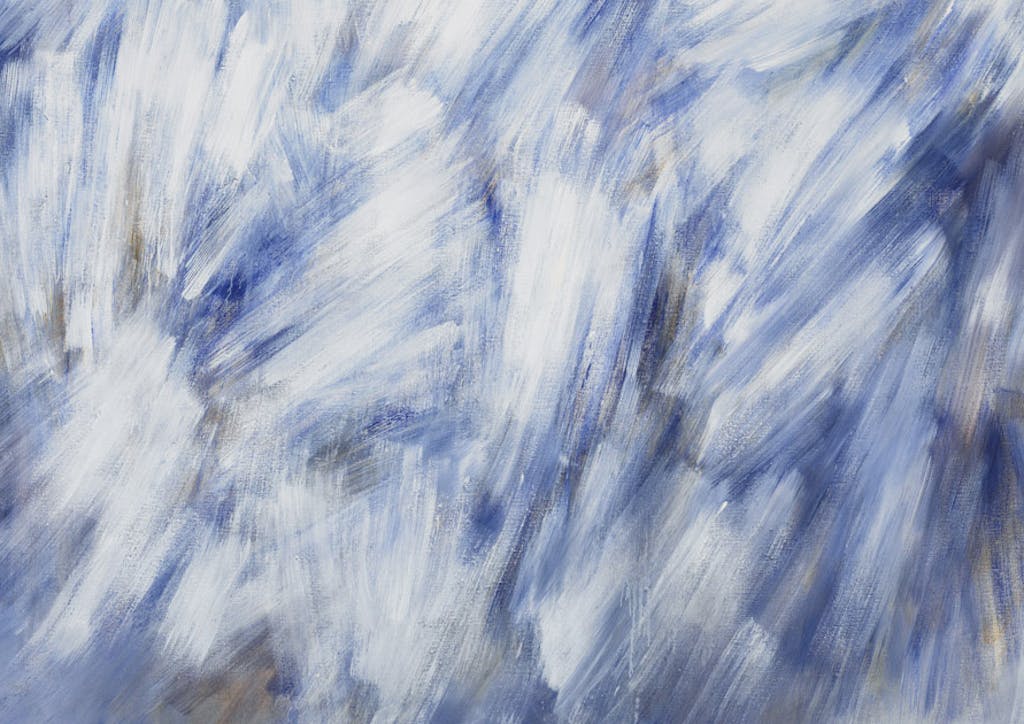From the end of the 1950s onwards, it dominated all other colours in his paintings and reached an extremely multi-faceted expression. During the painter’s main creative phase between 1980 and 1999, a linear development in his work had already dissolved in favour of a juxtaposition of different artistic forms. The structuring and modulation of the entire surface of the painting, which had always played an important role for Girke, now took place through particularly moving brushstrokes – at times dynamic, falling, at times arranged in a regular rhythm on the canvases, many of which are over two metres in width. Another important characteristic are the ever-increasing contrasts: Girke precisely used the intensifying, activating effect of dark tones in the picture to help his ‘Queen of Colours’[1] to become more visible. They either shine through a thin layer of white, blend in with it, wet on wet, or, as accents, set themselves apart from it. These works are opposed to still, almost monochrome canvases in which traces of painting and gradations of grey tones can only be recognised on closer inspection. In others, a grey layer lying beneath the white only very slightly shines through the clearly visible brushstroke.
On paper, Girke achieves the same versatility and painterly freedom as on canvas. Highly sensitive, evenly monochrome watercolours in coloured grey tones, which completely impregnate the sheet, or line-like structures, some of which are also made in pasty oil paint, transfer the painter’s meditative concentration to the viewer. Although his striving for clarity and balance reveals Girke’s affinity to Far Eastern philosophy, his painting conveys neither a message nor a state of mind; Girke explores himself in it and articulates his ‘experience of the world’.[2]
Raimund Girke (b. 1930 in Heinzendorf, Lower Silesia, today Poland) taught painting at the Berlin University of the Arts from 1971–96. He has received several awards for his work, including the Lovis Corinth Prize (1995).
[1] From Raimund Girke, ‘Zu meinen Bildern’, in: Das Einfache, das Schwer zu machen ist, Galerie Adam Seide (Hannover, 1960), n.p.
[1] In conversation with Dietmar Elger, in: Dietmar Elger, Raimund Girke. Malerei, Sprengel Museum Hannover et al (Ostfildern: Cantz Verlag, 1995), p. 196.
